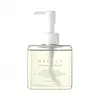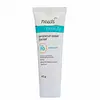What's inside
What's inside
 Key Ingredients
Key Ingredients

No key ingredients
 Benefits
Benefits

 Concerns
Concerns

 Ingredients Side-by-side
Ingredients Side-by-side

Ethylhexyl Palmitate
EmollientSorbeth-30 Tetraoleate
EmulsifyingTriethylhexanoin
MaskingCaprylic/Capric Triglyceride
MaskingOlea Europaea Fruit Oil
MaskingPogostemon Cablin Leaf Oil
MaskingRosmarinus Officinalis Leaf Oil
MaskingCaprylyl Glycol
EmollientCamellia Japonica Seed Oil
EmollientCandida Bombicola/Glucose/Methyl Rapeseedate Ferment
AntimicrobialEthylhexylglycerin
Skin ConditioningArgania Spinosa Kernel Oil
EmollientCamellia Sinensis Seed Oil
HumectantCocos Nucifera Oil
MaskingHelianthus Annuus Seed Oil
EmollientOryza Sativa Bran Oil
EmollientSimmondsia Chinensis Seed Oil
EmollientVitis Vinifera Seed Oil
EmollientWater
Skin ConditioningButylene Glycol
Humectant1,2-Hexanediol
Skin ConditioningSaponaria Officinalis Leaf Extract
AntimicrobialLimonene
PerfumingLinalool
PerfumingEthylhexyl Palmitate, Sorbeth-30 Tetraoleate, Triethylhexanoin, Caprylic/Capric Triglyceride, Olea Europaea Fruit Oil, Pogostemon Cablin Leaf Oil, Rosmarinus Officinalis Leaf Oil, Caprylyl Glycol, Camellia Japonica Seed Oil, Candida Bombicola/Glucose/Methyl Rapeseedate Ferment, Ethylhexylglycerin, Argania Spinosa Kernel Oil, Camellia Sinensis Seed Oil, Cocos Nucifera Oil, Helianthus Annuus Seed Oil, Oryza Sativa Bran Oil, Simmondsia Chinensis Seed Oil, Vitis Vinifera Seed Oil, Water, Butylene Glycol, 1,2-Hexanediol, Saponaria Officinalis Leaf Extract, Limonene, Linalool
Water
Skin ConditioningDisodium EDTA
Xanthan Gum
EmulsifyingGlycerin
HumectantAllantoin
Skin ConditioningNiacinamide
SmoothingPotassium Cetyl Phosphate
EmulsifyingAcrylates Copolymer
Octocrylene
UV AbsorberButyl Methoxydibenzoylmethane
UV AbsorberEthylhexyl Salicylate
UV AbsorberEthylhexyl Triazone
UV AbsorberHomosalate
Skin ConditioningButyloctyl Salicylate
Skin ConditioningC12-15 Alkyl Benzoate
AntimicrobialTocopheryl Acetate
AntioxidantPhenoxyethanol
PreservativeCaprylyl Glycol
EmollientBHT
AntioxidantTriacontanyl Pvp
HumectantGlyceryl Stearate
EmollientTriethanolamine
BufferingMethylene Bis-Benzotriazolyl Tetramethylbutylphenol
UV FilterDecyl Glucoside
CleansingPropylene Glycol
HumectantParfum
MaskingSilica
AbrasiveCitric Acid
BufferingWater, Disodium EDTA, Xanthan Gum, Glycerin, Allantoin, Niacinamide, Potassium Cetyl Phosphate, Acrylates Copolymer, Octocrylene, Butyl Methoxydibenzoylmethane, Ethylhexyl Salicylate, Ethylhexyl Triazone, Homosalate, Butyloctyl Salicylate, C12-15 Alkyl Benzoate, Tocopheryl Acetate, Phenoxyethanol, Caprylyl Glycol, BHT, Triacontanyl Pvp, Glyceryl Stearate, Triethanolamine, Methylene Bis-Benzotriazolyl Tetramethylbutylphenol, Decyl Glucoside, Propylene Glycol, Parfum, Silica, Citric Acid
Ingredients Explained
These ingredients are found in both products.
Ingredients higher up in an ingredient list are typically present in a larger amount.
Caprylyl Glycol is a humectant and emollient, meaning it attracts and preserves moisture.
It is a common ingredient in many products, especially those designed to hydrate skin. The primary benefits are retaining moisture, skin softening, and promoting a healthy skin barrier.
Though Caprylyl Glycol is an alcohol derived from fatty acids, it is not the kind that can dry out skin.
This ingredient is also used as a preservative to extend the life of products. It has slight antimicrobial properties.
Learn more about Caprylyl GlycolWater. It's the most common cosmetic ingredient of all. You'll usually see it at the top of ingredient lists, meaning that it makes up the largest part of the product.
So why is it so popular? Water most often acts as a solvent - this means that it helps dissolve other ingredients into the formulation.
You'll also recognize water as that liquid we all need to stay alive. If you see this, drink a glass of water. Stay hydrated!
Learn more about Water